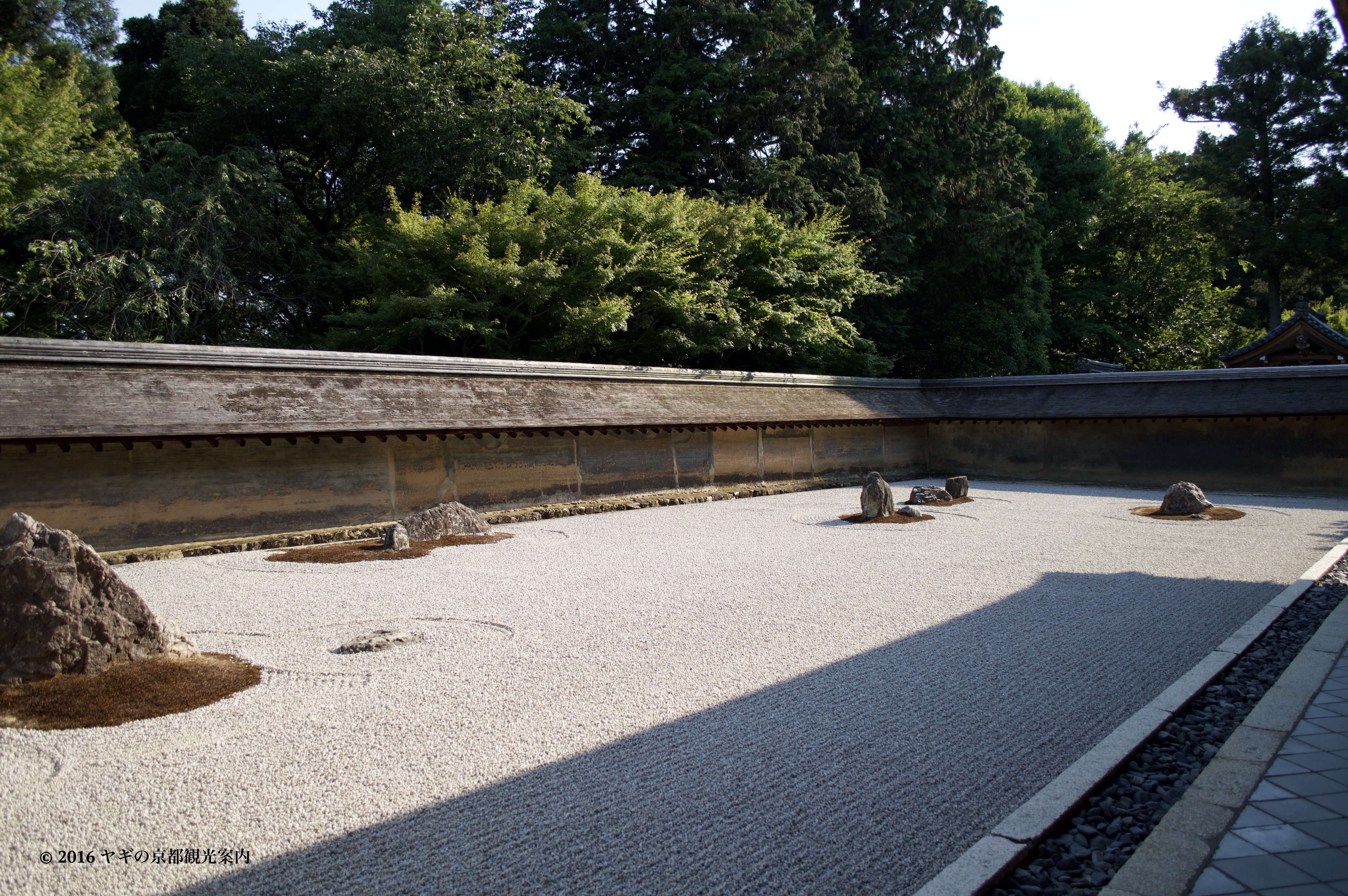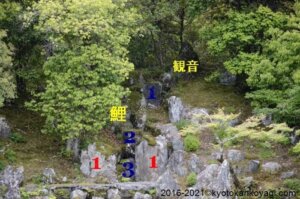THE GIST OF THIS ARTICLE
- This page Introduction, the meaning of Japanese gardens, Karesausui of pre-Muromachi era, and Karesansui of post-Muromachi era
- Page 2 The reasons for the development
The following is the contents of this article.
The reasons for the development
Scarcity of lands
In 1467. Ohnin no Ran, the largest civil war in Japanese history, started and it lasted for a decade and Kyoto was completely devastated. It was difficult for people in any classes to find and afford a place for a edifice with a large garden any more.

For these reasons, gardens got smaller and smaller. Those who wanted a garden was couldn’t afford a large places and designers couldn’t took advantage of a small place belong to small a building. It was so small they were not able to make artificial mountains in a garden.
Influence of Zen
In 13th century, Zen was imported. From Southern Song, a monk called Lanxi Daolong came to Japan. He named a fall “Ryu Mon no Taki (Dragon Gate Fall)” and founded a temple called Ryoanji temple.
Ryumon no Taki means “dragon gate fall” which found in (碧巌録 The Blue Cliff Recored), the compilation of Zen stories.
There is a sentence: 三級浪高魚化龍
It means a carp crawl up three falls and became a dragon. It is an anecdote describes a Zen monk ought to be: The way to learn the wisdom of Kannon through hard training.
In 14th century, Muso Soseki, a prominent Zen monk constructed Ryumon Baku (Ryumon no Taki) in Saihoji and Tenryuji temple. He found the nature is the best place for Zen training. He was an influential person and Japanese Zen wanted buildings of temples and gardens to be a symbol of the nature.

In Japanese Zen, the nature and we are all the same and could be a Buddha (enlightened person). And Japanese people shows respect and gratitude for the nature traditionally. Zen developed their attitude for the nature. It is a foundation of the Karesansui of post-Muromachi era.
Ink wash paintings 水墨画の具体化
In 14th century, Japan resumed trading with China for the first time in around 60 years. Ashikaga Yoshimitsu, the third Shogun of Ashikaga Shogunate and the founder of Kinkakuji, advanced the trade. The Shogunate traded many merchandises including ink wash paintings from Northern Song.
In the paintings, nature is describes in a technique called 残山剰水(Zan zan Johsui) which stands for huge scenery with a small part of it. This technique was a great help to represent the huge nature in a small garden.
Bibliography
Daisetz T. Suzuki, Zen and Japanese culture, Bollingen Foundation Inc., 1959
David and Michiko Young, The Art of the Japanese Garden, TUTTLE publishing, 2005
小野健吉 (2009)『日本庭園ー空間の美の歴史』岩波書店
今江秀史 (2020)『京都発・庭の歴史』世界思想社
中田勝康 (2020) 『全貌 日本庭園 象徴庭園から抽象枯山水へ』学芸出版社
ヤギの京都観光案内/KYOTO GOAT BLOGをもっと見る
購読すると最新の投稿がメールで送信されます。




